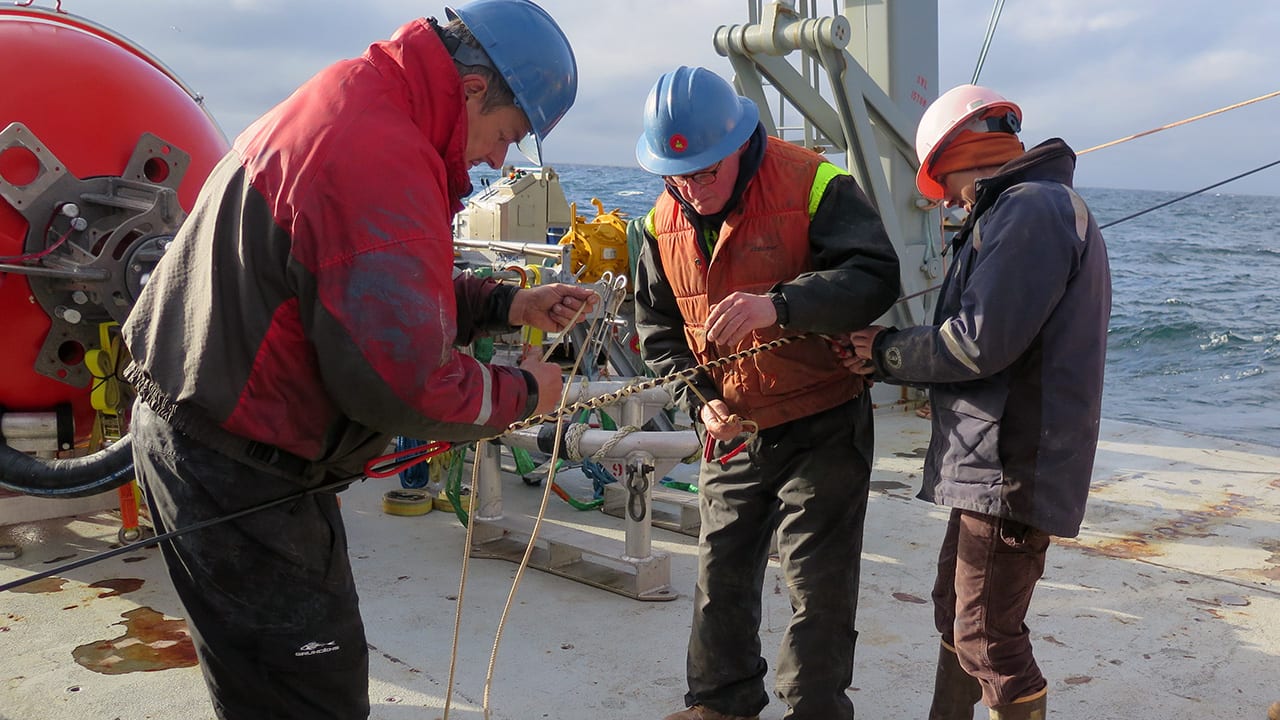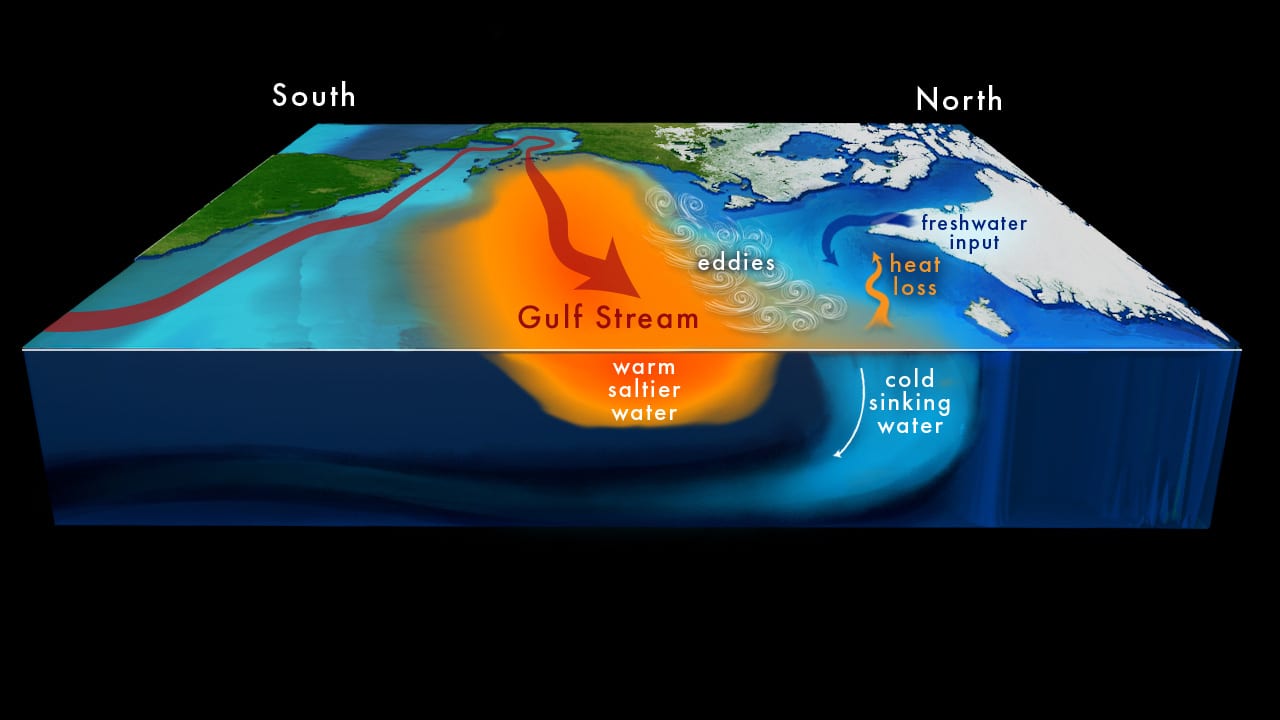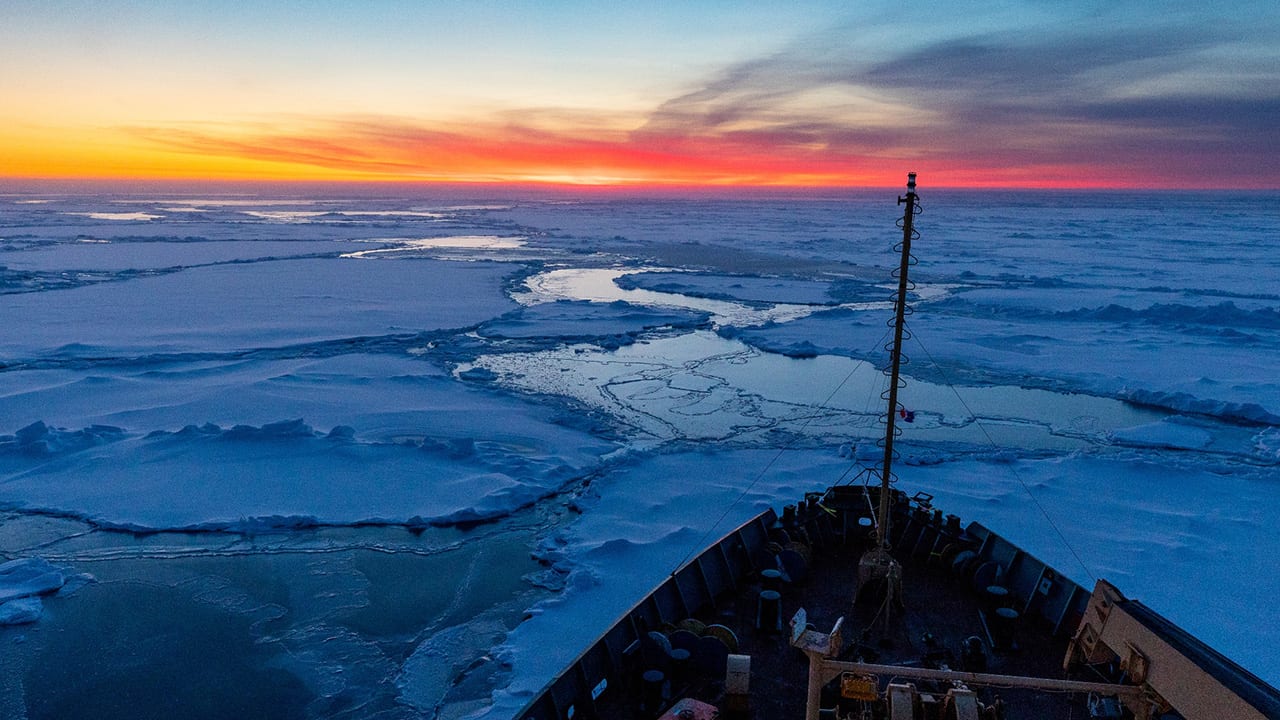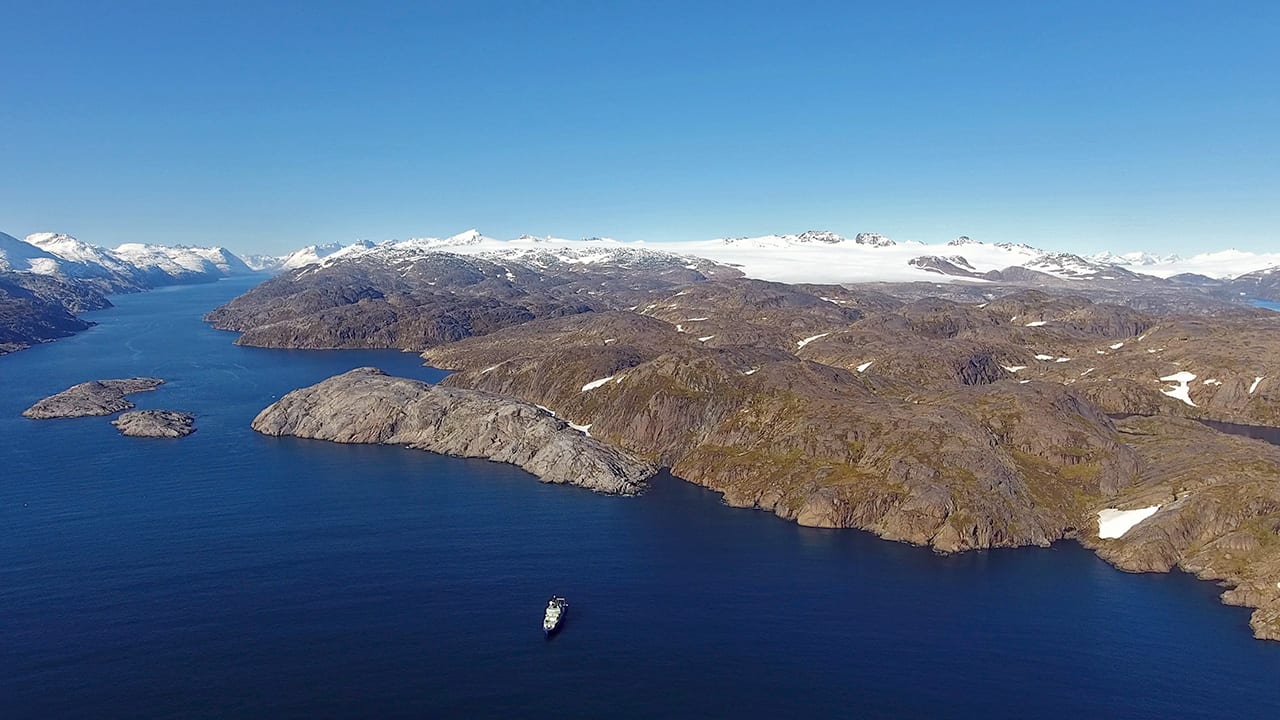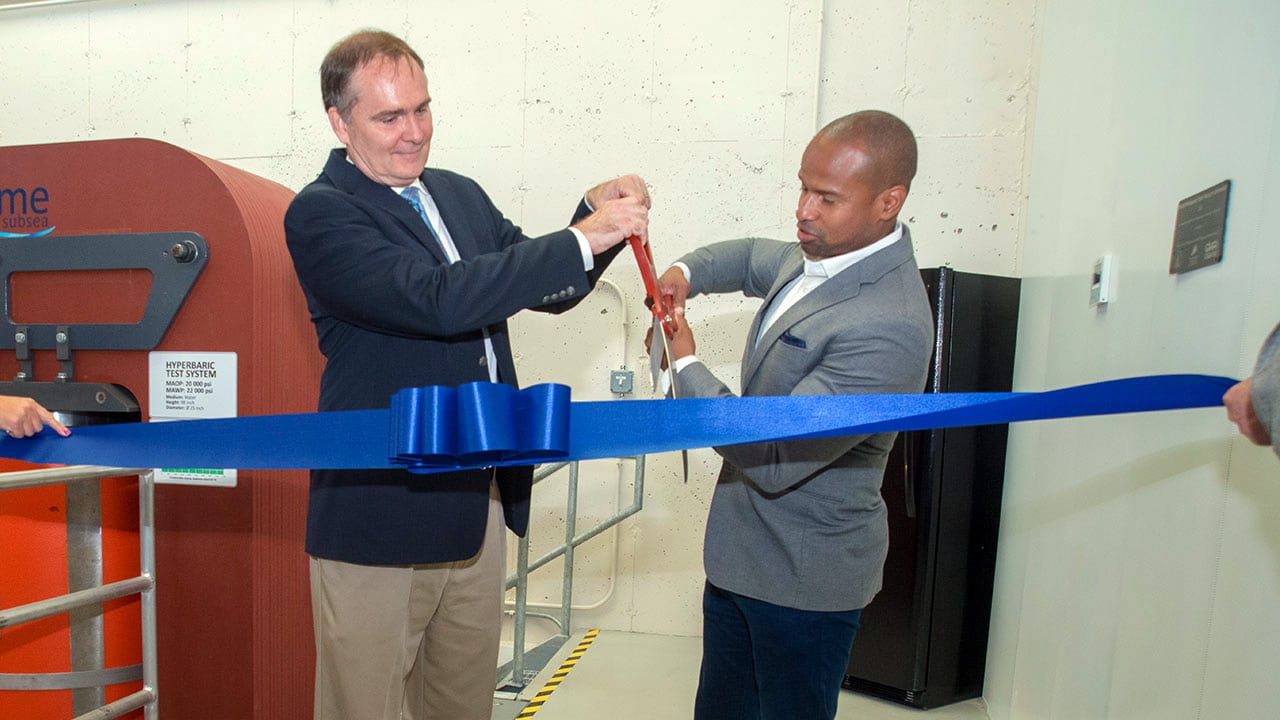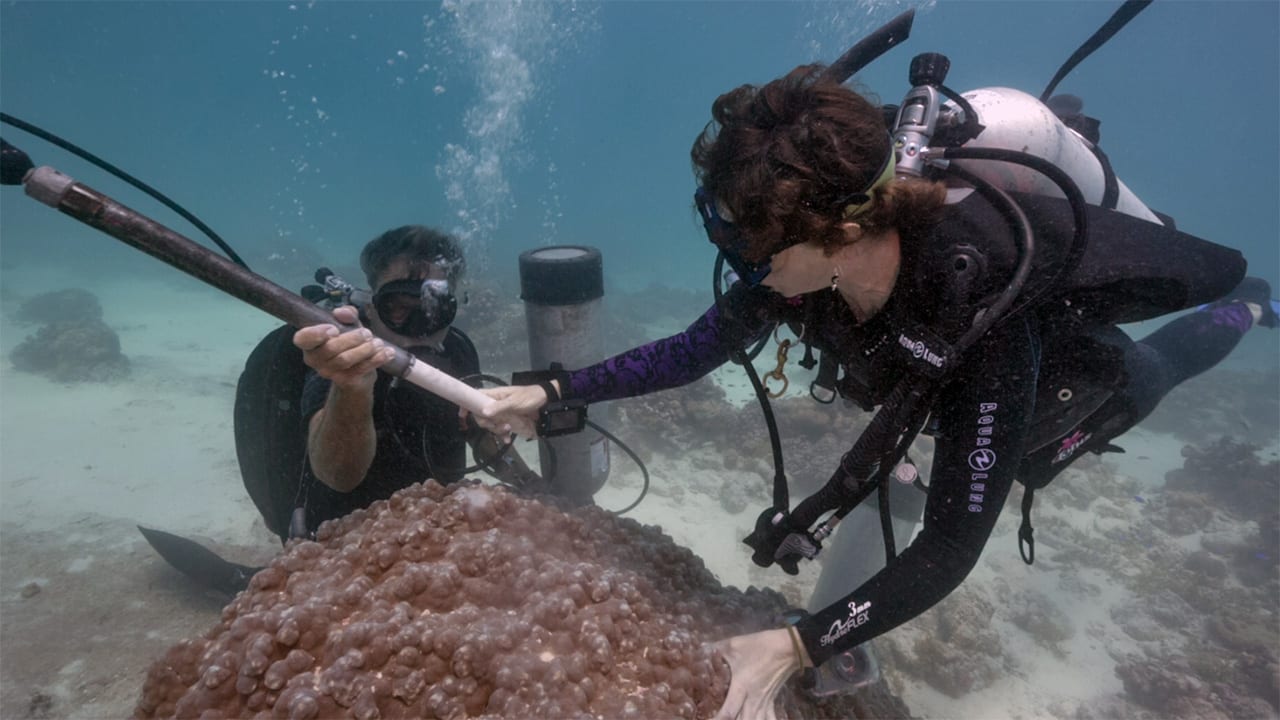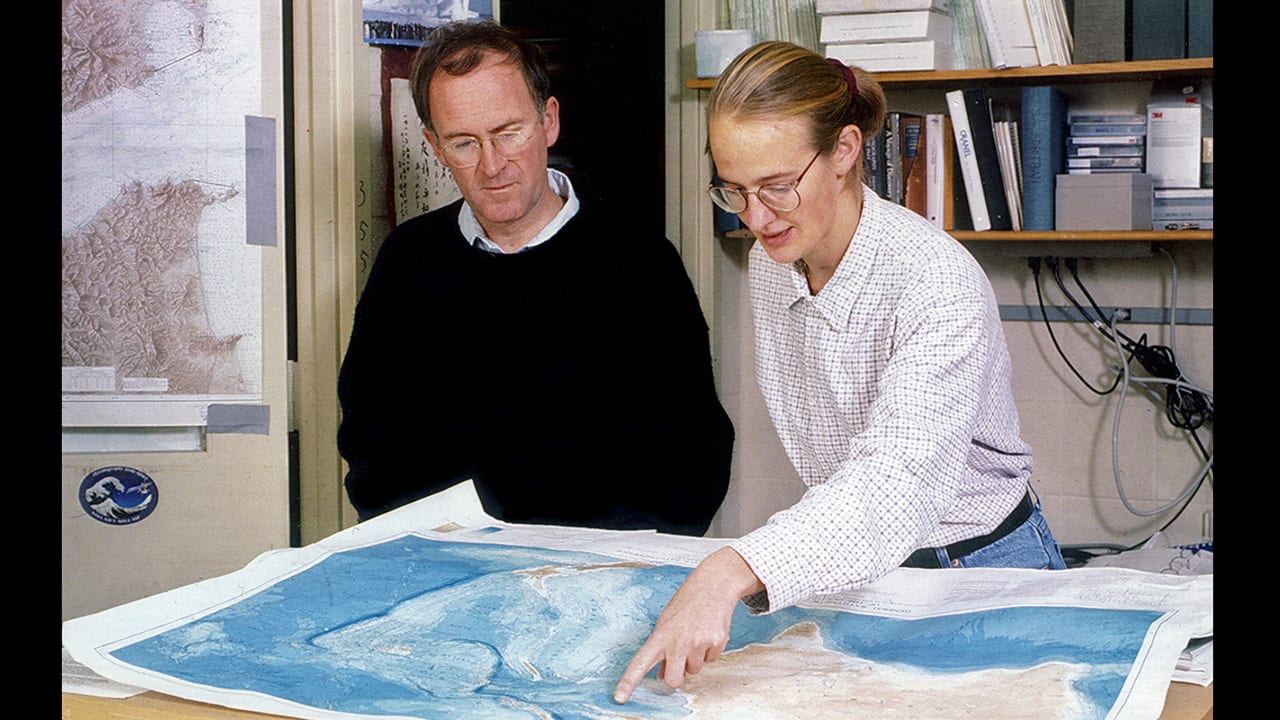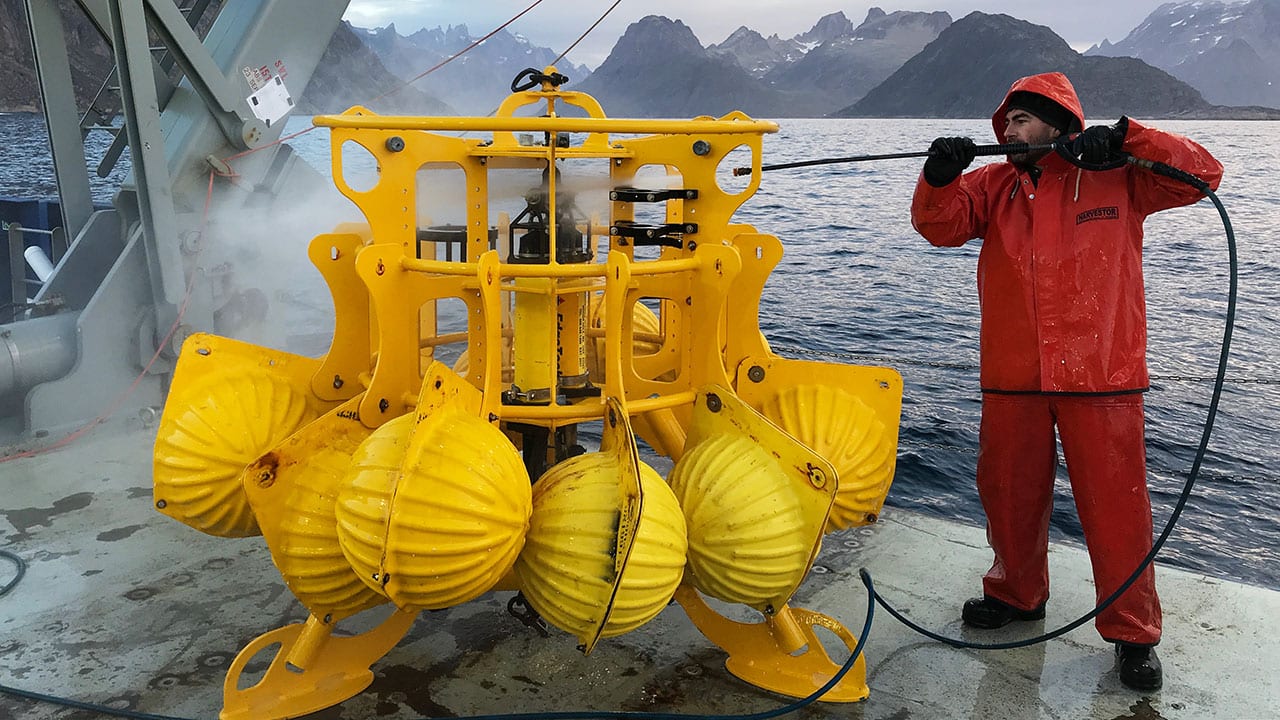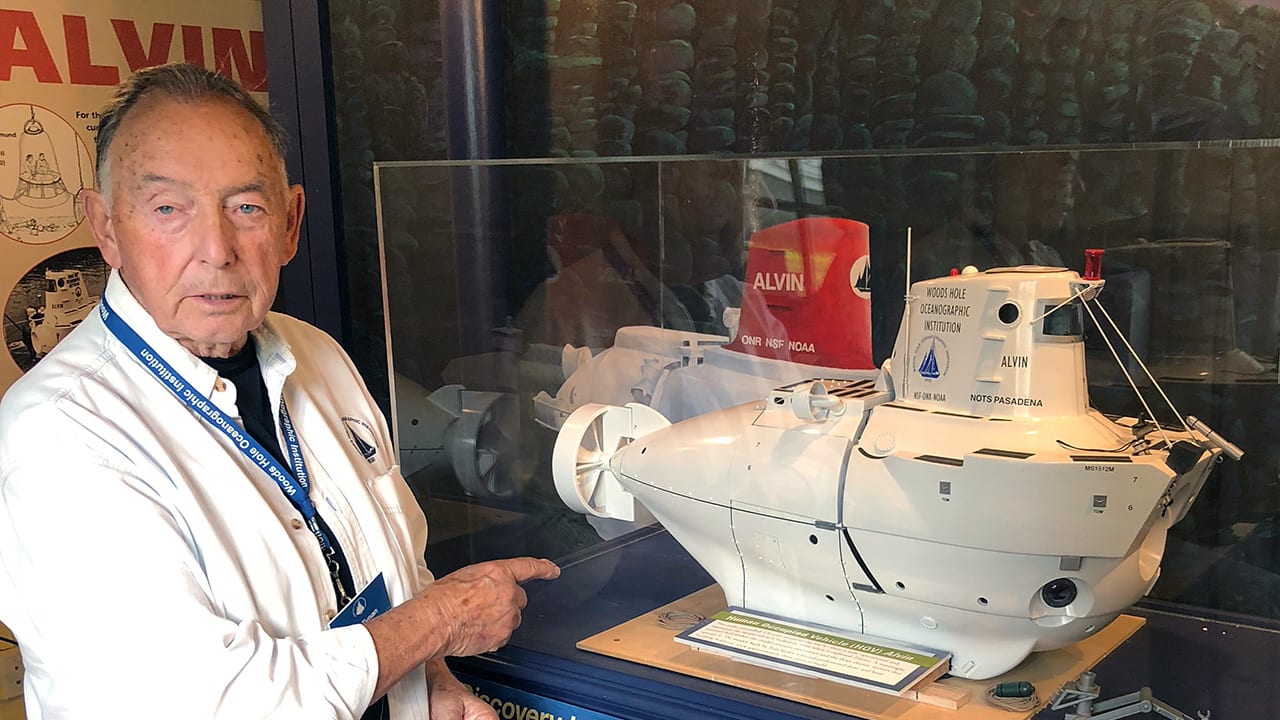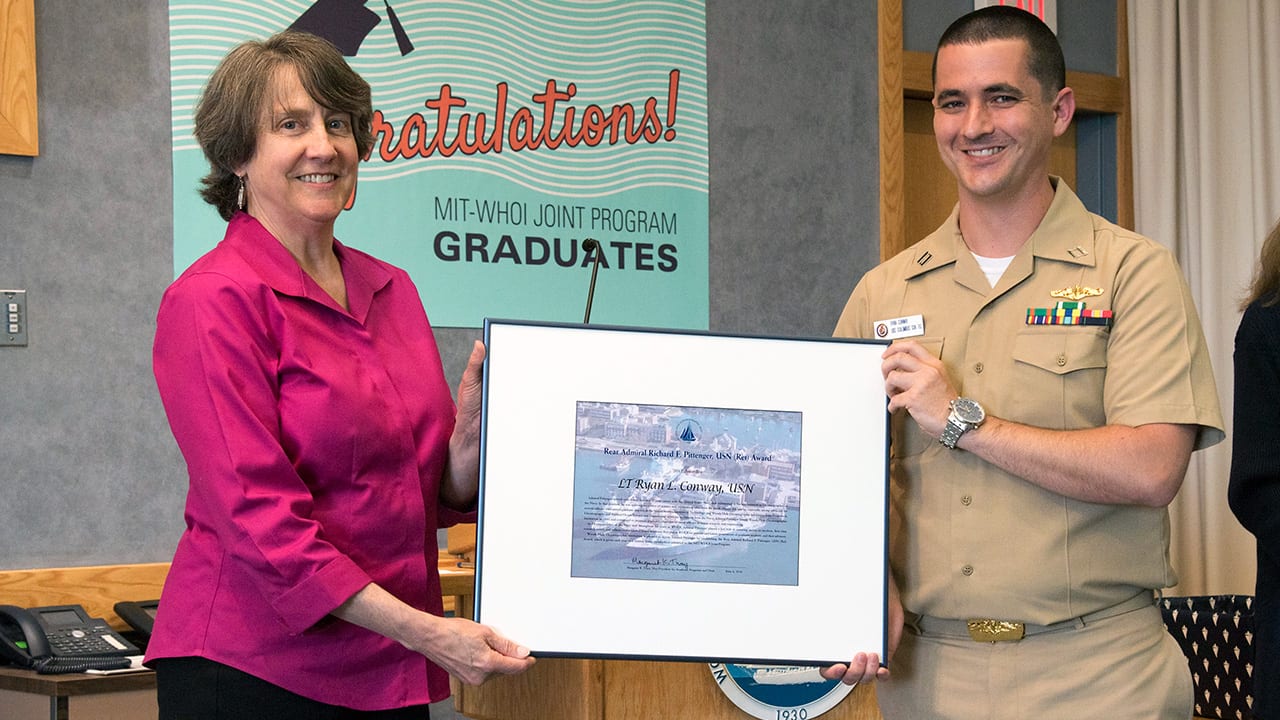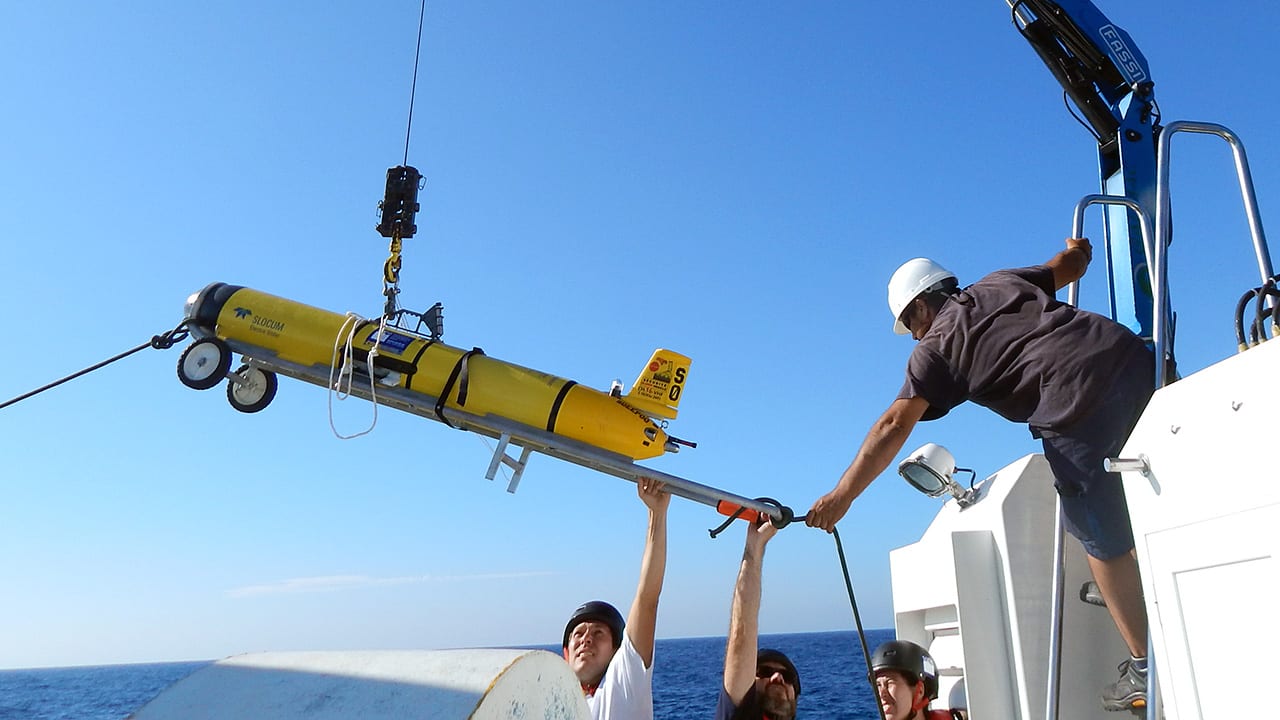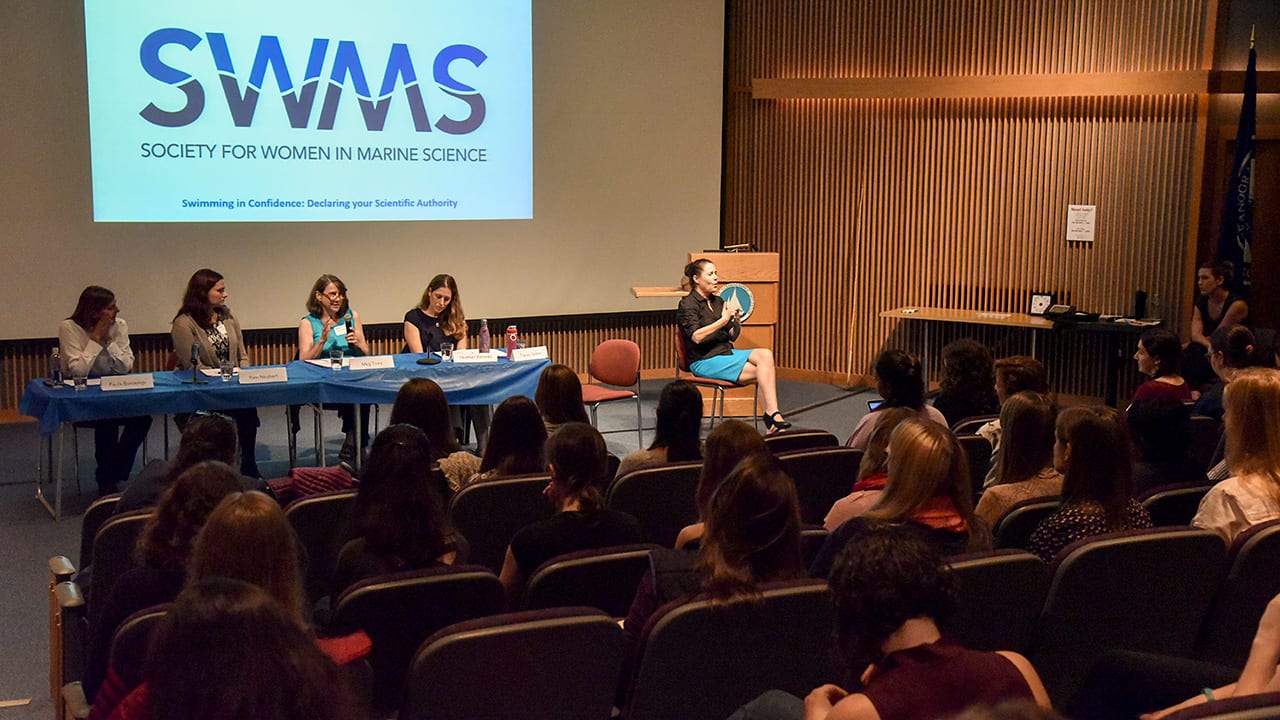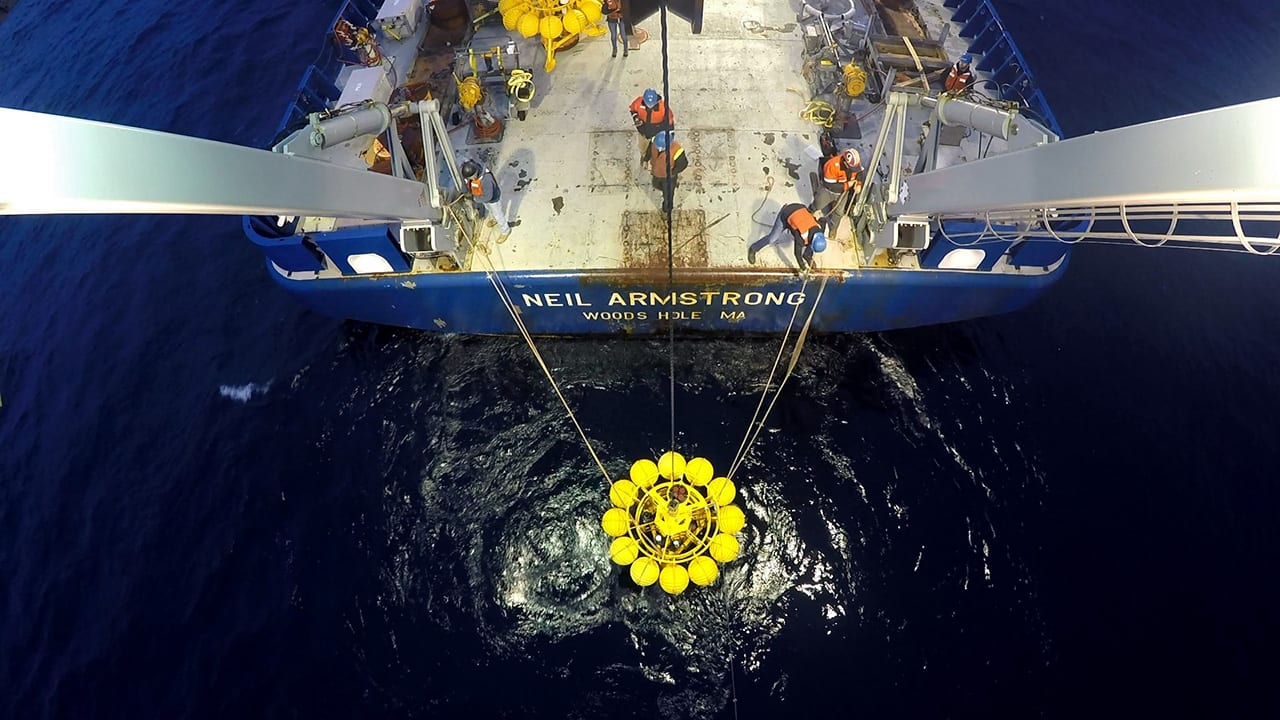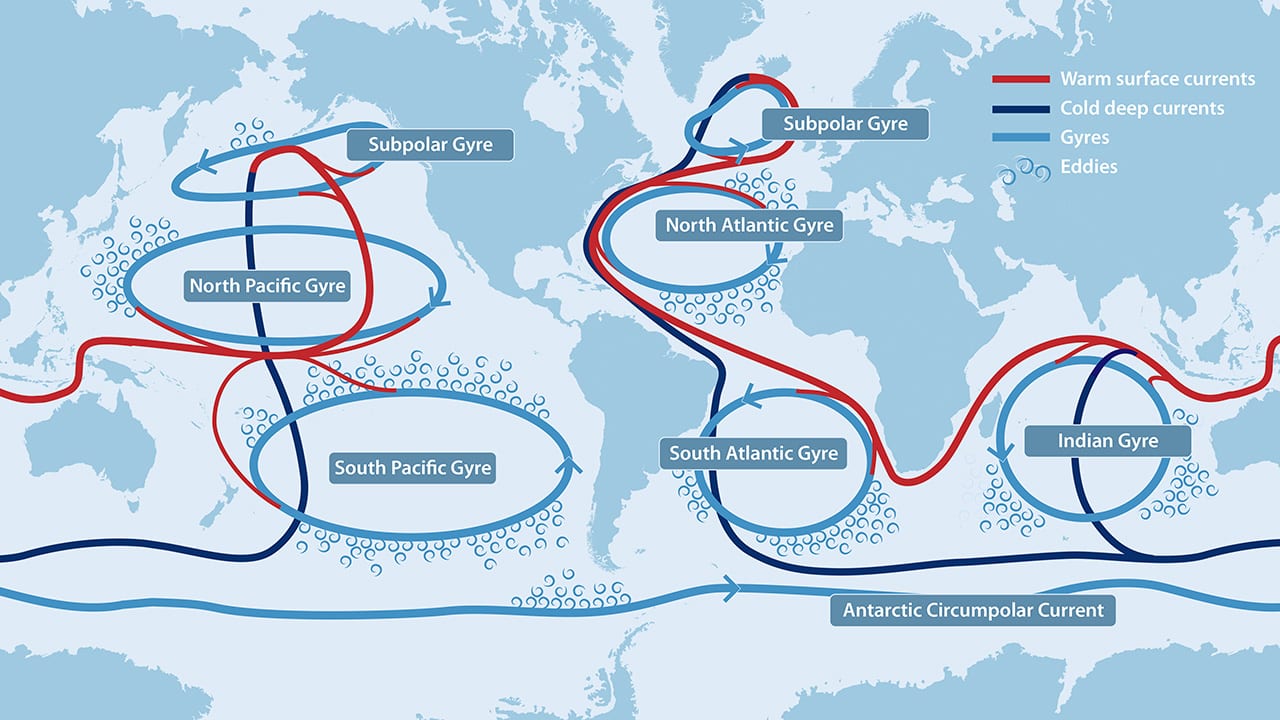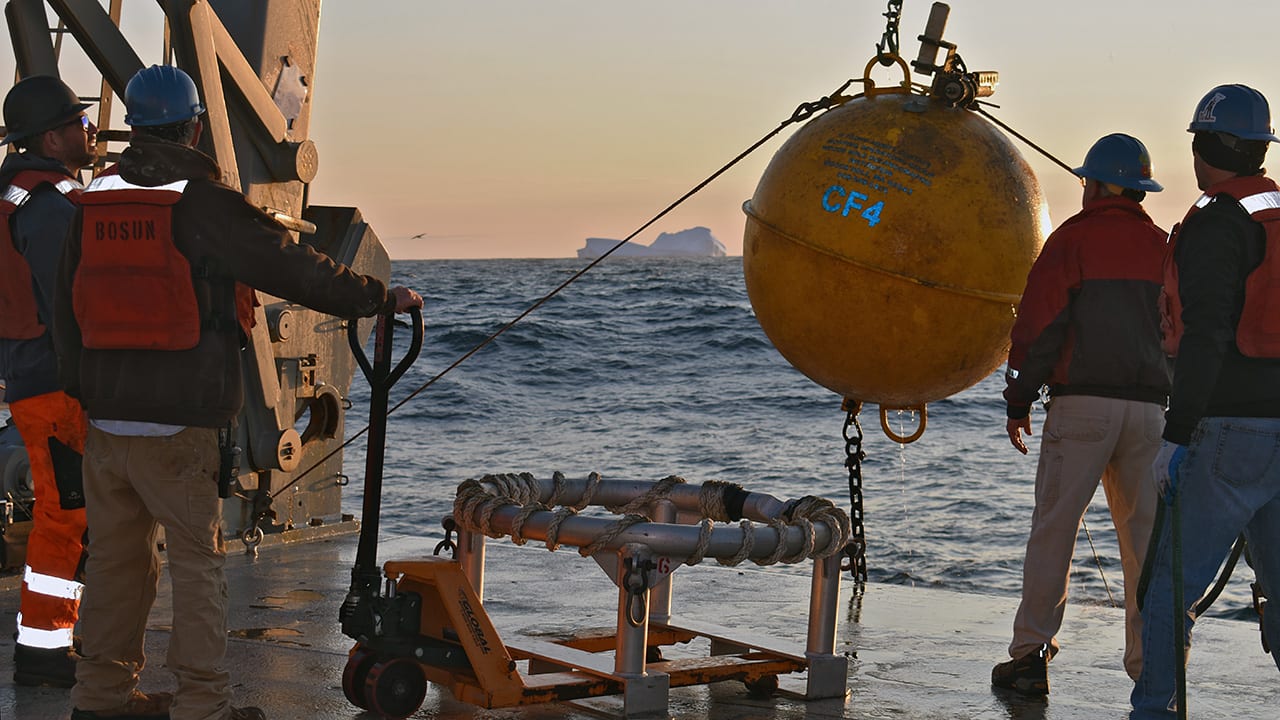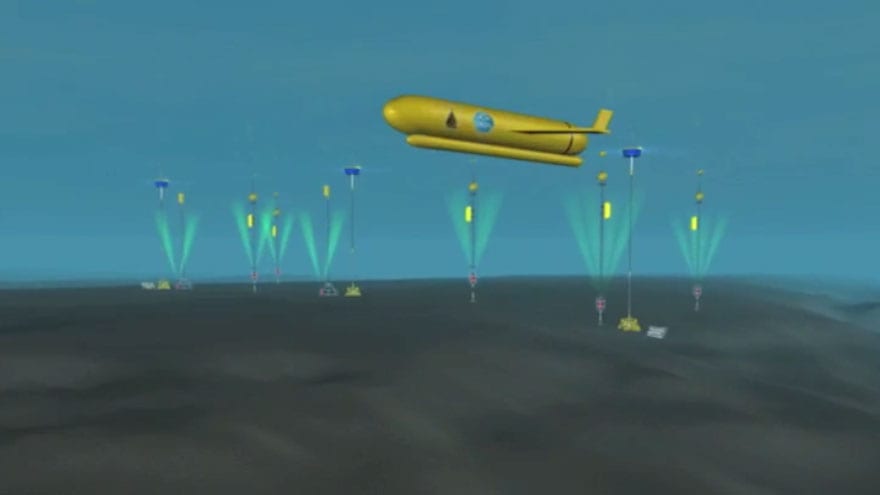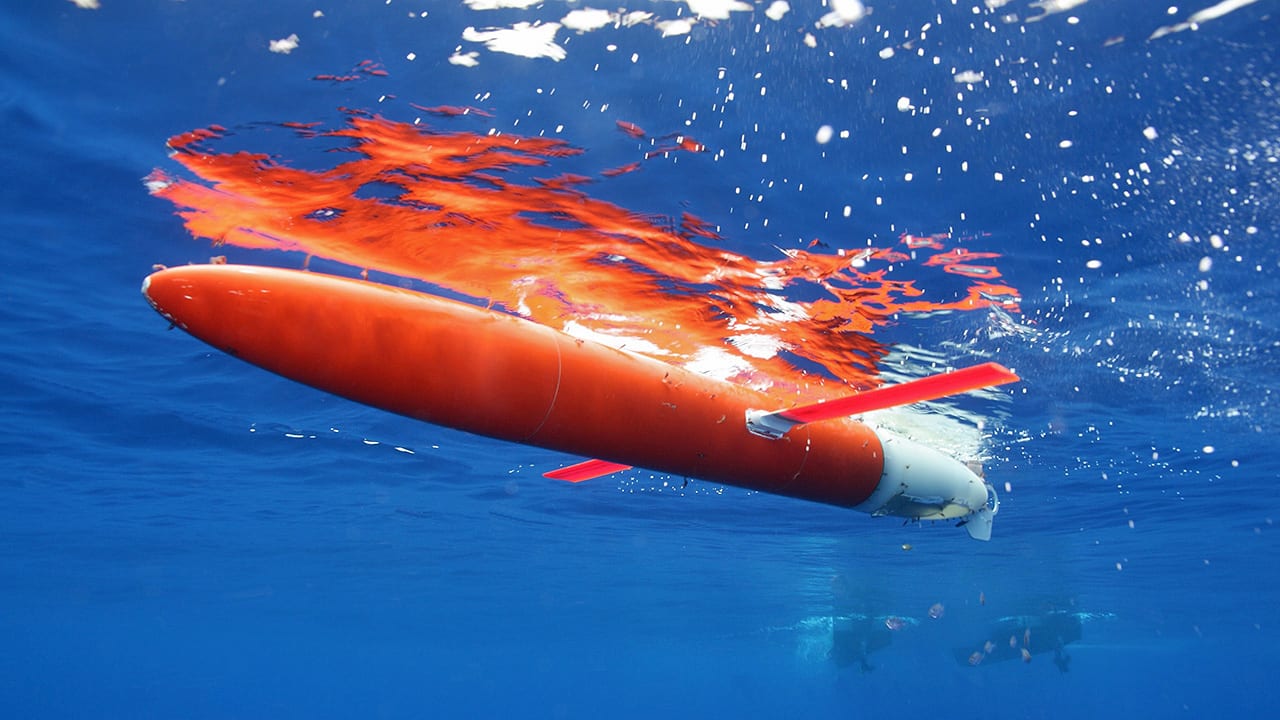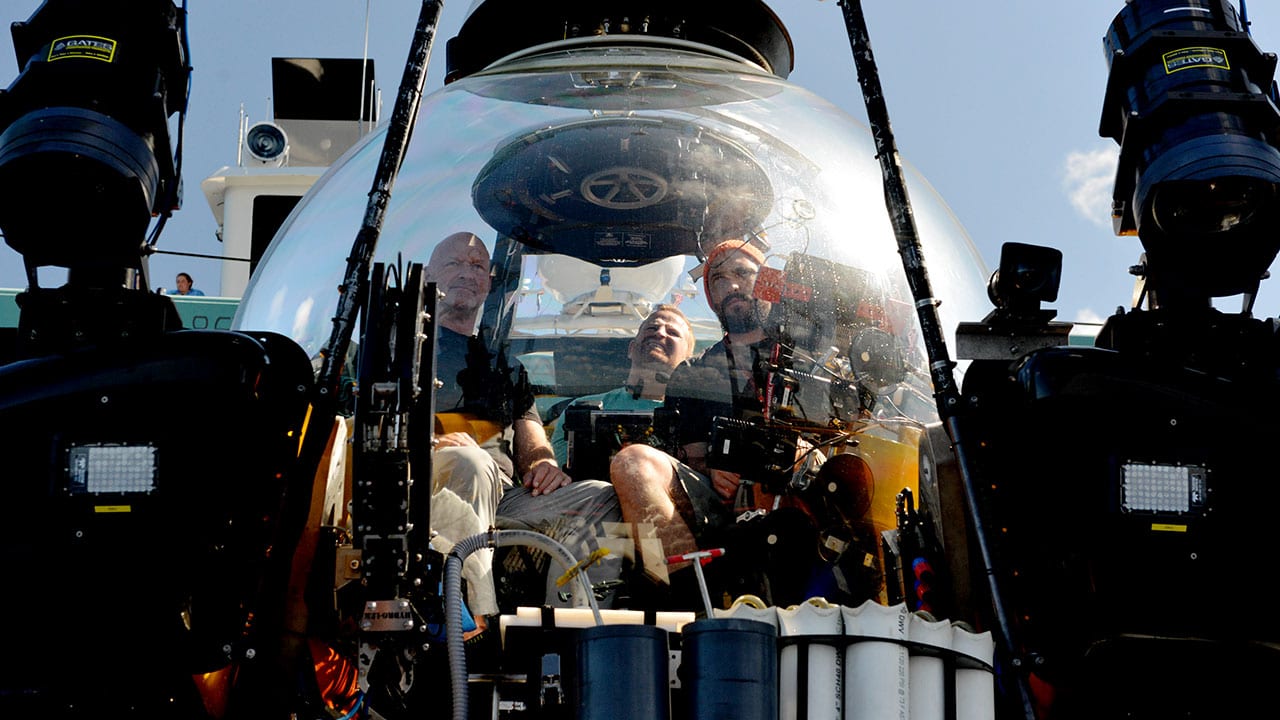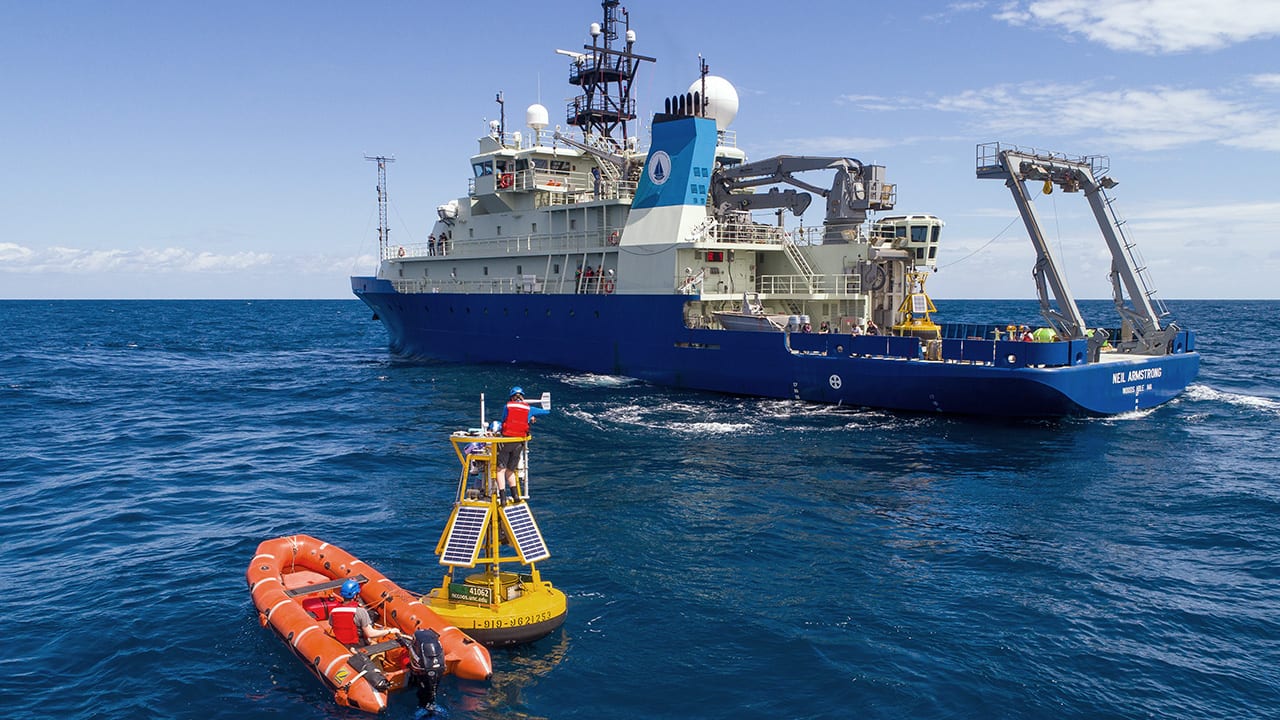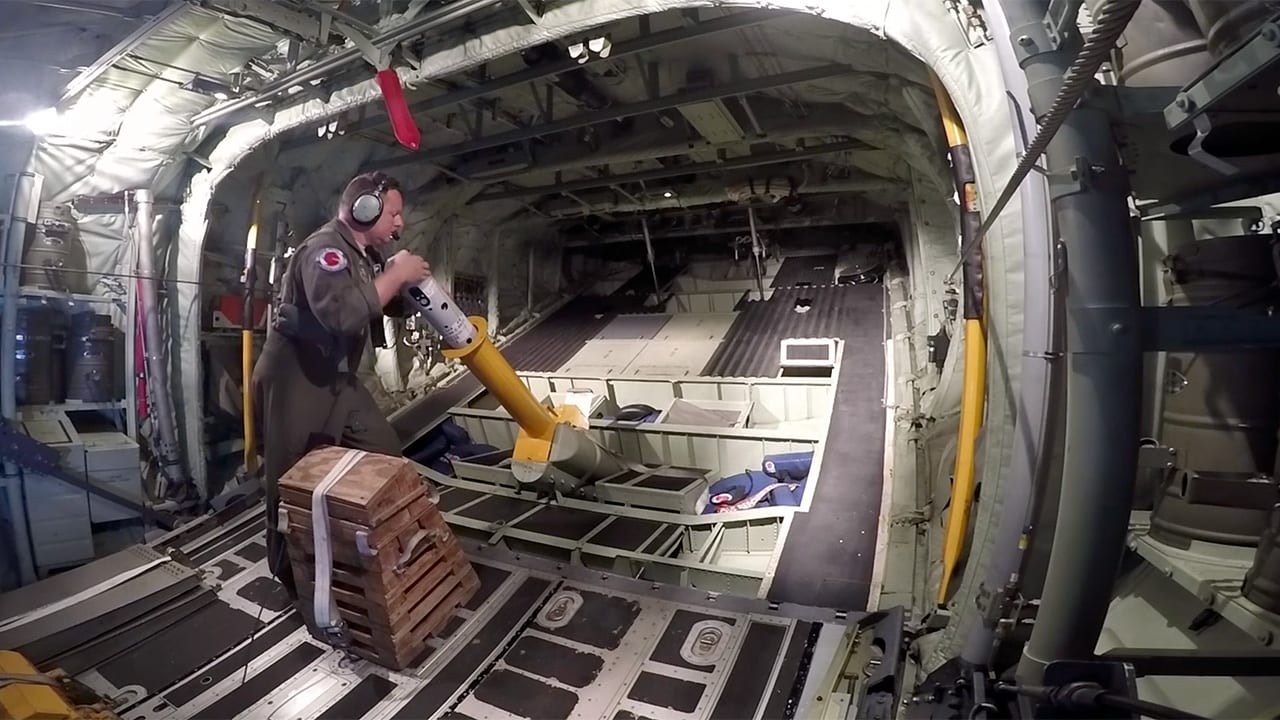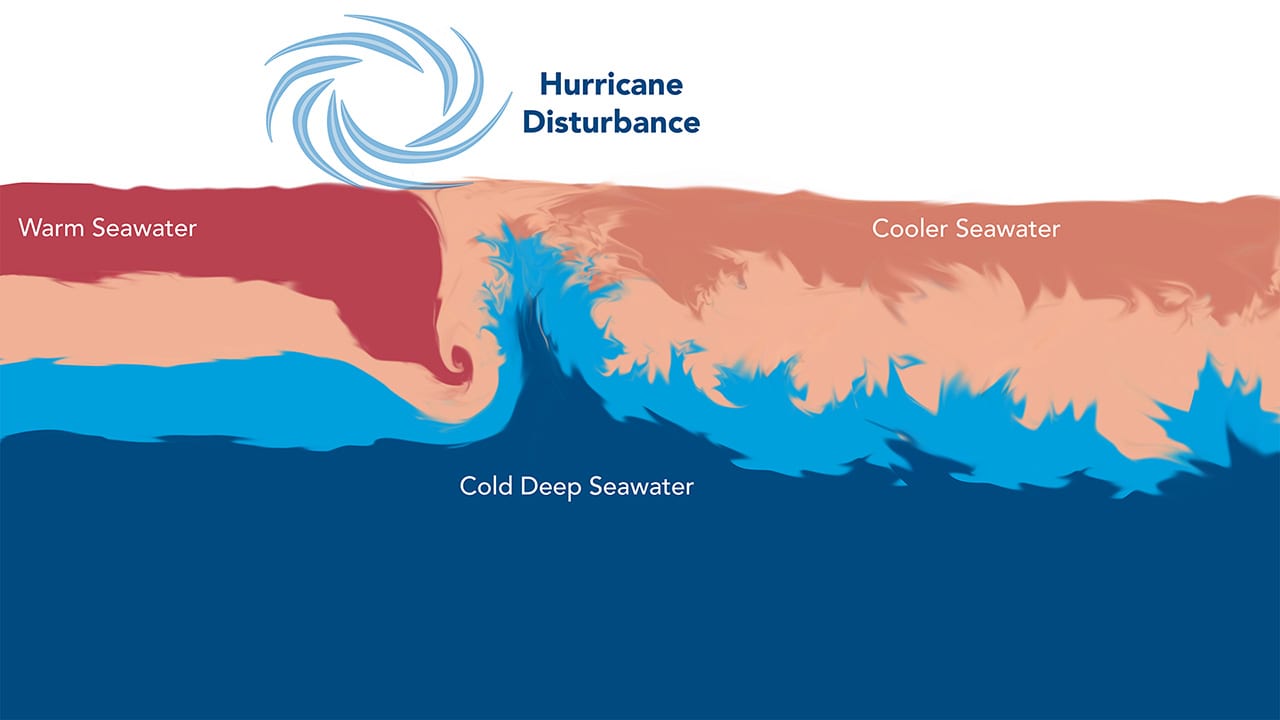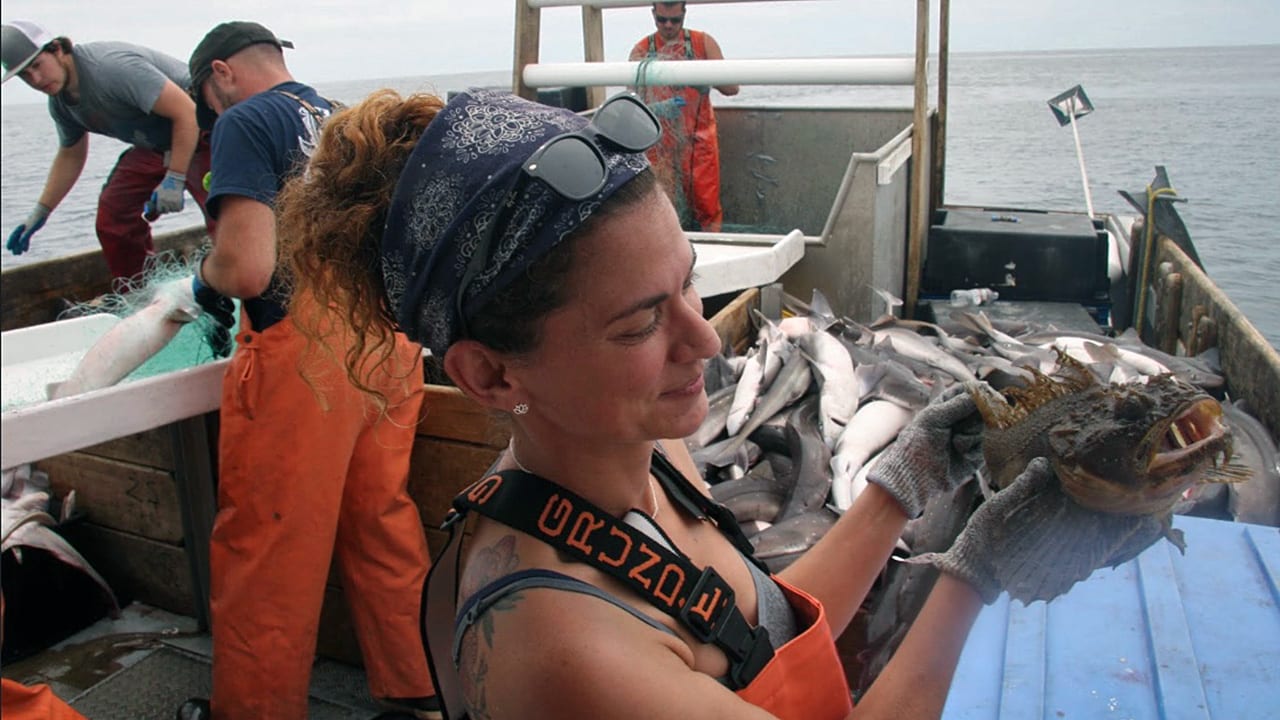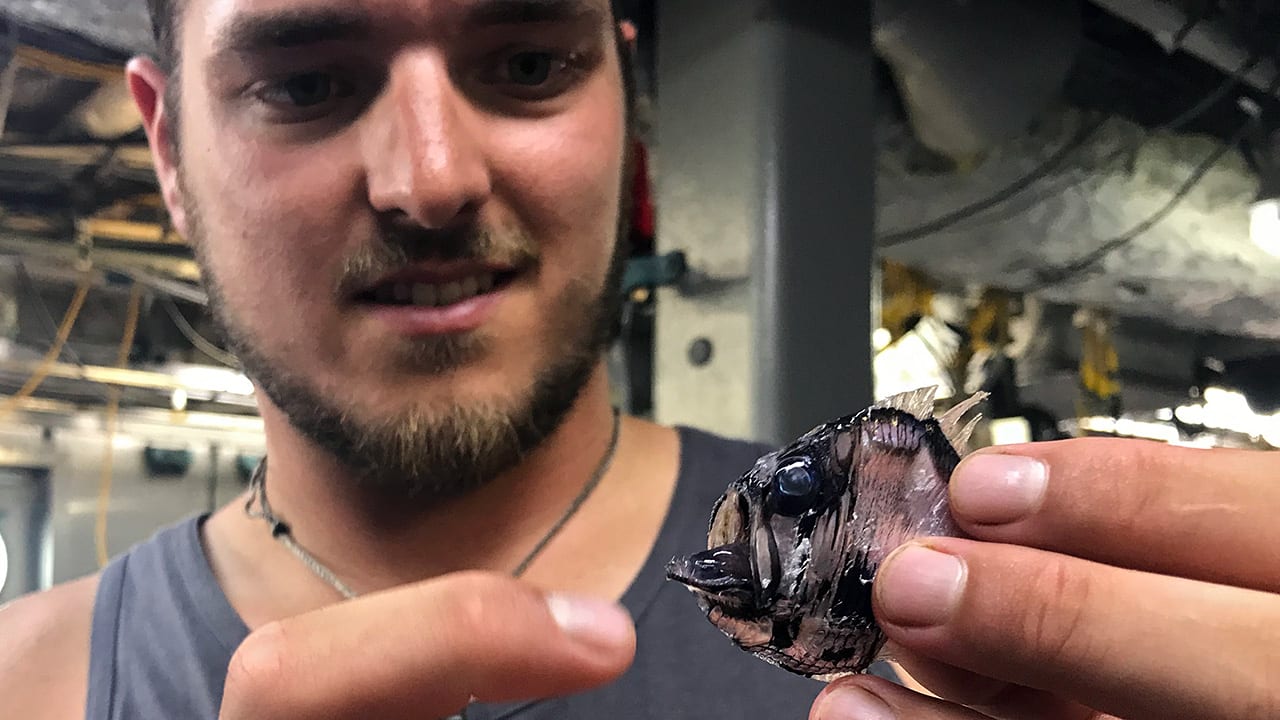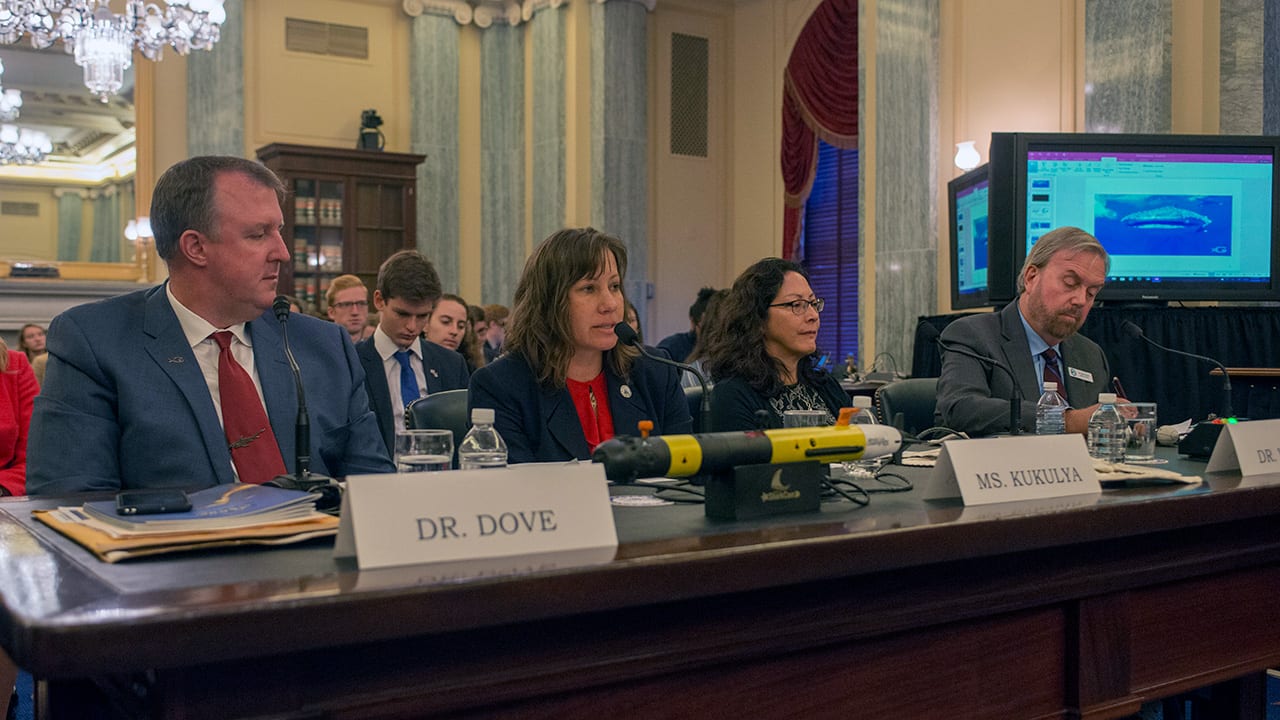Multimedia
Getting a Good Grip
WHOI Mooring Operations & Engineering lead John Kemp (center) and Senior Engineering Assistants Jim Dunn and Meghan Donohue work to add a YaleGrip to an electro-magnetic (EM) cable during a…
Read MoreGulf Stream Waters
Sam Levang, a graduate student in the MIT-WHOI Joint Program, has been studying the Atlantic Meridional Overturning Circulation, a critical component of Earth’s climate system. It transports warm and salty…
Read MoreFresh Water in the Arctic
The Canadian icebreaker Louis S. St-Laurent negotiates thick ice floes near Beaufort Gyre, a major Artic Ocean circulation system north of Alaska. Global warming may be disrupting the natural rhythms…
Read MoreView from Above
The research vessel Neil Armstrong paused at the mouth of Prince Christian Sound in southern Greenland recently so its crew could carry out deck work in sheltered waters. The team…
Read MoreCelebrating Success
The WHOI Center for Marine Robotics (CMR) fosters collaboration between WHOI engineers and scientists and industry sponsors, academic partners, and key government agencies, in order to develop new robotic systems…
Read MoreLooking for Resilience
WHOI coral scientists Anne Cohen and Pat Lohmann extract core samples from a coral during a recent cruise to Kiritimati (Christmas Island) in the central Pacific Ocean. The scientists will…
Read MoreA Multigenerational Success Story
Since its establishment 50 years ago, the MIT-WHOI Joint Program has had an ongoing multigenerational legacy of training leaders in the field of oceanography. Here, Susan Wijffels, an MIT-WHOI graduate…
Read MoreWash Day
The research vessel Neil Armstrong ducked into Prince Christian Sound last week to take advantage of the calm seas. The ship is currently on a mission to replace a set of…
Read MoreValuable Volunteers
Jim Tynan uses a model of the human-occupied vehicle Alvin in the Ocean Science Discovery Center to inform visitors about the research and engineering that goes on at WHOI. Tynan is a…
Read MoreOur Newest Pittenger Award Winner
Margaret Tivey, vice president for academic programs & dean of the MIT-WHOI Joint Program, presents Lt. Ryan Conway with the 2018 Richard F. Pittenger Award. It is given annually to a…
Read MorePrepare to Glide
Researchers deploy an underwater glider in the Mediterranean Sea in 2017. MIT-WHOI Joint Program student Mara Freilich and her advisor Amala Mahadevan have been investigating oceanic fronts—similar to meteorological fronts where high-…
Read MoreSWMS Takes on Diversity in STEM
The Society for Women in Marine Science (SWMS) is holding its 2018 Fall Symposium tomorrow (Sat., Sept. 22) in Woods Hole. Last year’s meeting (pictured) focused on women scientists finding confidence in…
Read MoreBack to the Sea
The crew of the research vessel Neil Armstrong and WHOI mooring technicians return a seafloor tripod into the Labrador Sea southwest of Greenland for another two-year deployment as part of the…
Read MoreA Road Map for the Ocean
Sam Levang, a graduate student in the MIT-WHOI Joint Program, investigates the pathways of ocean water circulating throughout the globe. The oceans circulate heat and have a significant role in regulating Earth’s…
Read MoreTracking North Atlantic Currents
From left: WHOI engineer Andrew Davies, bosun Pete Liarkos, and WHOI engineers John Kemp and Brian Hogue recover a mooring aboard the research vessel Neil Armstrong southeast of Greenland. The…
Read MorePioneer Array
Animation of a coastal component of the Ocean Observatory Initiative.
Read MoreGliding Beneath Florence
WHOI oceanographer Robert Todd launched a Spray glider like this toward the path of Hurricane Florence to measure the amount of heat stored in the ocean. Hurricanes are fueled by warm…
Read MoreCanyon Explorers
Yesterday, on the second anniversary of the founding of the Northeast Canyons and Seamounts National Monument, WHOI deep-sea biologist Tim Shank, submersible pilot Buck Taylor, and photographer Luis Lamar (left…
Read MoreMeasuring Fuel for a Hurricane
WHOI scientists, along with colleagues from the University of North Carolina-Chapel Hill, deploy a meteorological buoy off the research vessel Neil Armstrong near Cape Hatteras in April, 2017. The buoy…
Read MoreRemember the ALAMOs
A U.S. Air Force “Hurricane Hunter” prepares to drop an ALAMO (Air-Launched Autonomous Micro-Observer) float into the ocean in front of a hurricane. WHOI oceanographer Steve Jayne routinely joins the…
Read MoreForecasting Hurricane Intensity
To forecast hurricane intensities more accurately, scientists need to know a critical piece of information: how much heat is stored in the in upper 1,000 meters of the ocean. Hurricanes gather…
Read MoreHandle with Care
The sea raven, is a common bottom-dweller in ocean waters off New England. WHOI postdoctoral investigator Andrea Bogomolni (pictured) and WHOI researcher Alex Bocconcelli encountered this one earlier this summer while doing…
Read MoreThe Fascination of Discovery
WHOI recently concluded its first expedition to study life in the ocean twilight zone, a joint research cruise with scientists from the National Marine Fisheries Service and University of Connecticut.…
Read MoreShark Research at the Senate
WHOI engineer and SharkCam co-developer Amy Kukulya (center) testified before the U.S. Senate Committee on Commerce, Science, and Transportation in July. U.S. Senator John Thune (R-S.D.) convened the hearing, entitled…
Read More
